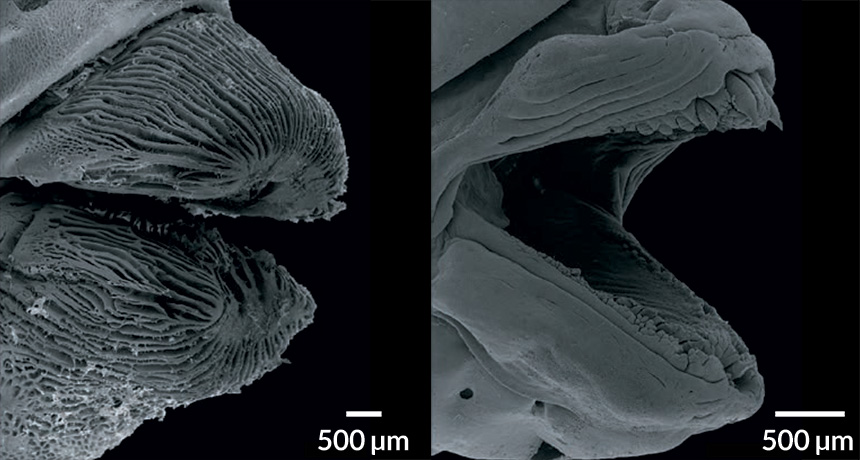Big slimy lips are the secret to this fish’s coral diet

Tubelip wrasses eat dangerously, daring to dine on sharp corals lined with stinging cells. New images reveal the fish’s secret to safe eating: lubing up and planting a big one on their dinner.
“It is like sucking dew off a stinging nettle. A thick layer of grease may help,” says David Bellwood, a marine biologist at James Cook University in Townsville, Australia, who snapped the shots with his colleague Victor Huertas.
Of roughly 6,000 fish species that roam reefs, just 128 consume corals. These corallivores specialize in different menus. Well-studied butterfly fish, for example, use their long, thin snouts to nip up coral polyps, the tiny animals that build corals. Tubelip wrasses such as Labropsis australis of the South Pacific are known for nibbling coral with their luscious lips, but until now, it was unclear what part of the coral the fish were eating or how they were eating it.
While the surface of the wrasse’s lips looks smooth to the naked eye, convoluted grooves appear under a scanning electron microscope, the team reports June 5 in Current Biology. Mucus-producing cells line each groove. In contrast, the lips of a wrasse species that doesn’t eat corals (Coris gaimard) are sleek and sport fewer slime-secreting cells.
Video footage of L. australis shows that the fish feeds by latching onto coral with its lips and sucking. The slime probably protects the fish’s lips from stinging cells that line the coral skeleton and also serves as a sealant, allowing the wrasse to get suction against the coral’s razorlike ridges.
“Their kiss is so hard it tears the coral’s flesh off its skeleton,” Bellwood says. The team suspects that the fish feed primarily on mucus layers and sometimes tissue that lines the sharp skeleton. So, essentially the fish are using their lip mucus to better harvest the coral’s mucus.
Mucus is, in general, a hot commodity in the marine ecosystem. Some fish use it as sunscreen, others for speed — it can reduce drag through the water. Cleaner wrasses even eat slime off the skin of other fish (SN: 8/2/03, p. 78).
Given the threats that coral reefs face from bleaching events and climate change, having fish that suck their flesh might seem a tad brutal. But whether the added stress of snot-eating fish serves as a mere nuisance or a serious threat remains to be studied.